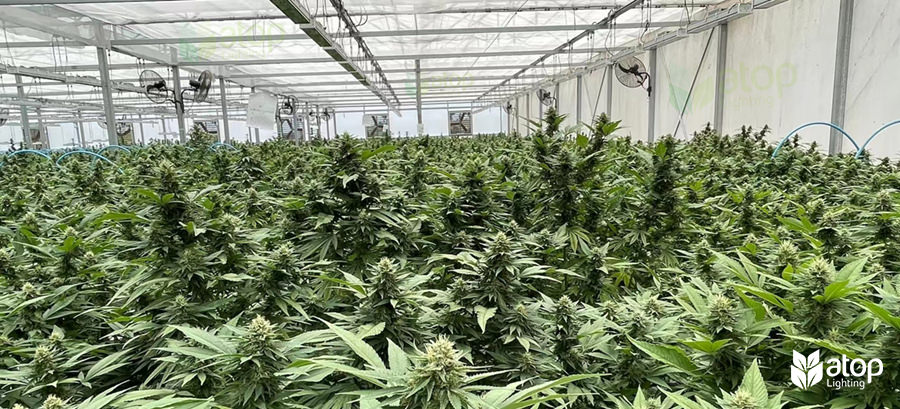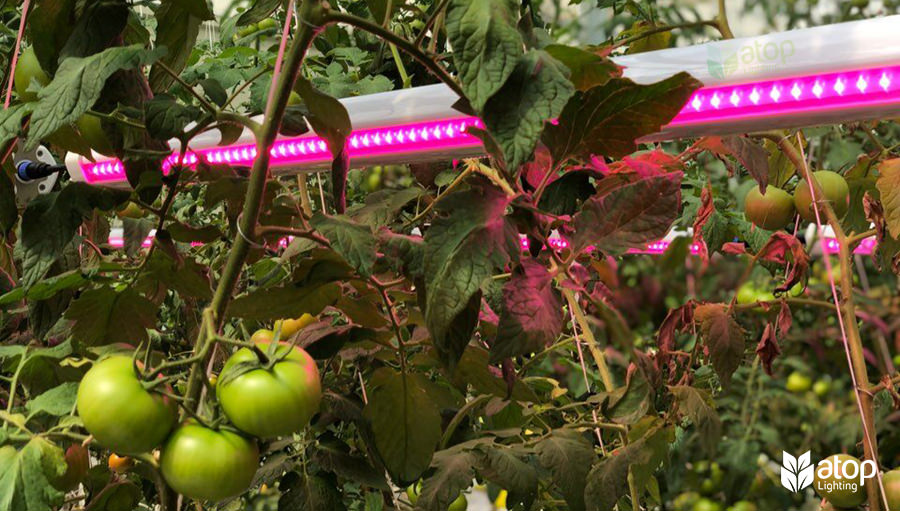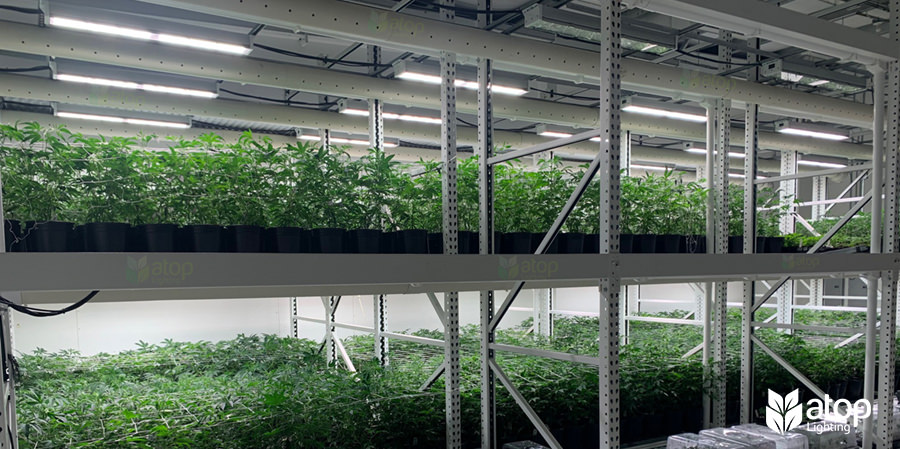Common Types of Horticultural Lighting Installations
There are multiple horticultural lights in the market, while LED grow lights are the most popular one. LED horticultural lights are widely used in greenhouses and vertical farms due to their low energy consumption, high efficiency, and long lifespan. However, installations or setups of grow lights is critical. Regardless of LED grow lights or conventional grow lights, using the wrong setup for horticultural applications may compromise the lighting effects. It will do harm to plants even worse. Therefore, to ensure the beneficial effects of horticultural lighting on plants, we should select the right installations. Today, we would talk about the three common types of lighting installations of horticultural applications, top lighting, interlighting, and vertical farming.
Top lighting
Just as the name suggests, grow lights are installed on the top of plants. This kind of lighting installation is mainly utilized in greenhouses. Top lighting mimics natural sunlight, providing Illumination to plants are from ceiling level. Traditional grow lights such as HPS lights and MH light should be mounted above the plants at a safe distance because they will generate a large amount of heat. Since grow lights are mounted on the high ceiling, the wide lighting distribution offers illumination to more plants and the long distance lowers the lighting density on plant canopy.
However, the lowered light intensity may not be sufficient for plants. This requires top lighting to consume a large scale of energy to ensure the adequate lighting on plant canopies over the long distance. Furthermore, top lighting concentrates on the upper-canopy of plants, which results the nonuniform intensity. To reduce the energy consumption and cut down electricity bill, more and more greenhouse owners replace their old HPS lights to LED lights.
Interlighting
With the advanced technology, quality and efficiency of horticultural lighting are greatly improved. But the installation of horticultural lighting has barely changed. Luckily, interlightling has been introduced in recent years. Interlighting is taken as the supplemental lighting in greenhouses, especially for the vine crop cultivation such as cucumbers and tomatoes. It is also widely used in vertical farms. This type of lighting installation places the horticultural lights alongside or between the plants and leaves. Compared to top lighting, interlighting is more effective in reducing the shade of leaves. As the survey showed, daytime interlighting significantly increased photosynthetic capacity and yield in winter while nighttime interlighting was beneficial for improving growth and yield in summer and winter.
Because interlighting is placed within the foliar canopy, ‘cold’ lighting is needed to avoid plant damages. HPS grow lights generate radiant heat, and they will increase the temperature of plants. The high temperature is a risk of tip burn of leaves. Thus, LED grow light is the appropriate light source for interlighting solution rather than HPS light. Some LED interlighting can provide 360 degree seamless light distribution for lower canopy, increasing vertical light uniformity.
Vertical farming
In vertical farms, plants are cultivated on racks and these racks are staked vertically. The stacked racks enable growers cultivate more crops in less space. Vertical farms are ideal for developing seeds and propagating young plants. It is also ideal for cultivating leafy greens, cannabis, and herbs. Because natural light is not available in vertical farms, vertical farming is the sole light source for plants.
Distance of vertical farming is shorter than top lighting but longer than interlighting. Grow lights are positioned above the plants in a close distance. Similar to interlighting, vertical farming requires the ‘cold’ light source as well. LED grow light emits less radiation heat than traditional light sources, so it is the optimal choice for vertical farming. Due to the vertical farming is the sole light source in vertical farms, uniform light distribution, optimal light spectrum, and complete control are critical. The uniform light distribution contributes to even growth. Optimal light spectrum meet plants needs precisely, allowing better growth and higher yield. Complete control vertical farming can be completely cut off with the 0-10V dimming, which offers the real darkness for plants.
In conclusion
Each lighting installation has its advantages and challenges. Adopt the right horticultural lighting installation to your grow room can maximize the beneficial effects of artificial grow lights and protect plants from damages. Here is a table about the comparison of top lighting, interlighting, and vertical farming.
|
|
Top lighting |
Interlighting |
Vertical farming |
|
Application |
Greenhouses |
Greenhouses, vertical farms |
Vertical farms |
|
Position |
High ceiling above the plants |
Along with or between the plants and leaves |
Racks that above plants in a close distance |
|
Benefits |
Will not burn the plants |
Enhance vertical light uniform Reduce leaves shade |
Save space |
|
Challenges |
Nonuniform light distribution |
Heat from lighting fixture |
Heat from lighting fixture. Nonuniform light distribution |
As a professional LED grow light manufacture, Atop provides high quality lighting solution for top lighting, interlighting, and vertical farming. Feel free to contact us for more details.




